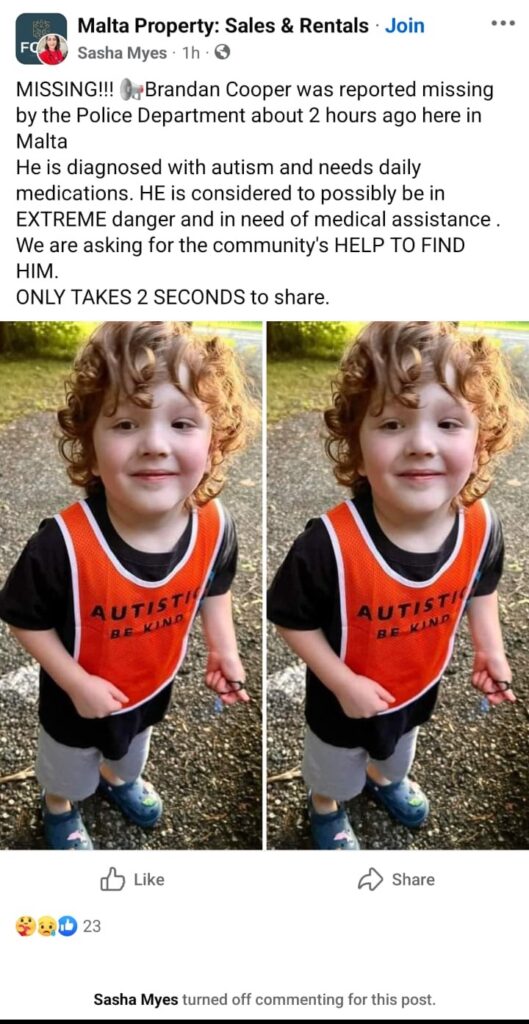It’s a trick as old as time, one common among Shakepeare’s Iagos, modern day demagogues, and cyber scammers: deception is most effective when it plays upon emotion.
Sympathy scams are a perfect example. These typically take the form of hoax social media posts purporting to be about something that tends to play on the public’s heartstrings, such as a young child found wandering alone or gone missing. Once the posts have attracted a fair amount of attention – likes, shares, views and interactions – the authors edit them to link to fraudulent sites that can steal users’ personal information.
The latest iteration of these scams spread in local Facebook groups a few days ago. An image of a small boy with autism is being used, and the post urges users to share it so as to supposedly help him be found. The same image has spread in the United States. It is worth noting that comments have been disabled by the poster, which is an odd move if one is trying to find a child. This is usually done to avoid other users debunking the post publicly.

Scammers used similar themes in 2023, when a post claiming to be about the author’s missing autistic son and his dog spread locally. Other scams have centred around dogs supposedly found injured, which would come as no surprise to Maltese readers, given the reach that pet posts tend to have.
Scam post red flags: Look out for emotional language and poor post formatting. What about the person sharing it? Is it a page rather than a profile? Has it only been recently created? Take a look at the comment section, too – sometimes comments are disabled by the poster to prevent people debunking their scheme publicly. Perhaps run a reverse search on the image being shared to see if it has been recycled or possibly even debunked by others. Finally, remember that engagement is not an automatic mark of authenticity. Shares/likes are not everything.





